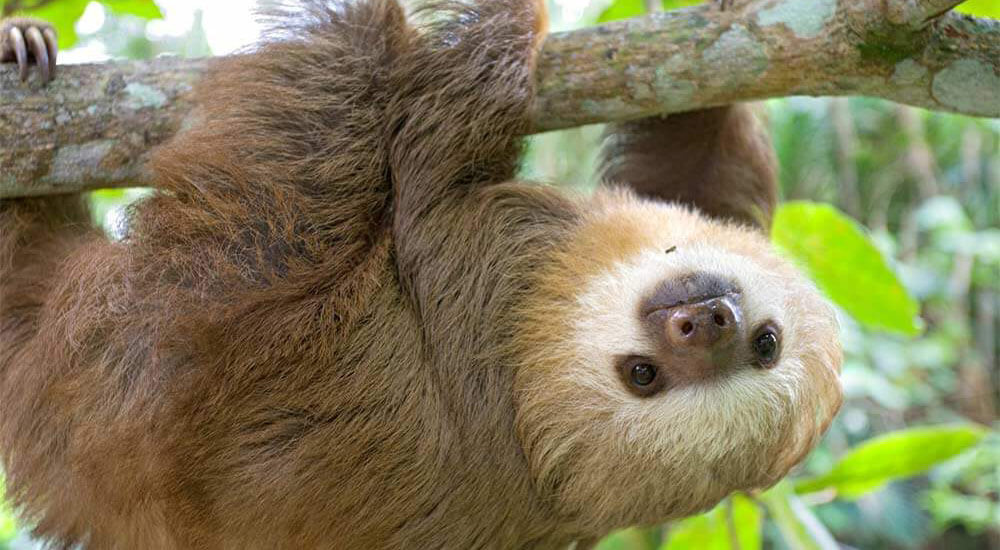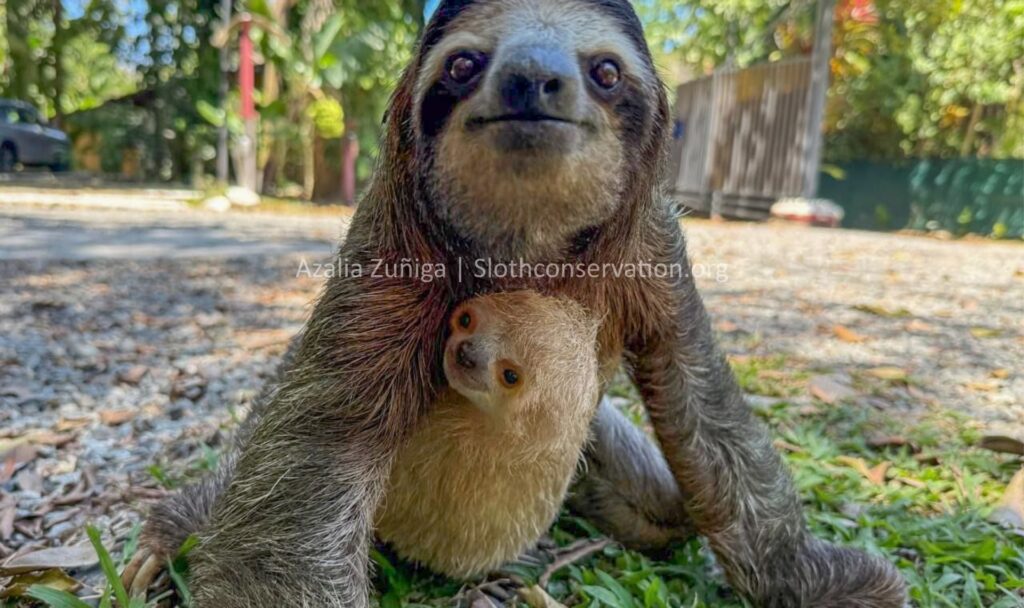Top 10 Incredible Facts About The Sloth
Sloths are far from being simple, lazy creatures that just sleep all day. They are complex, mysterious animals with an evolutionary history, features, and characteristics so weird that you might accuse us of making them up. To give you an insight into the misunderstood world of the sloth, Dr. Rebecca Cliffe (SloCo Founder and Executive Director) has given us her 10 favourite cool facts about sloths:
1. There used to be sloths the size of elephants!
All seven species of tree-climbing sloths that we see today evolved from giant sloths. There were thought to be over 80 different types, with the largest (Megatherium americanum) reaching over 19 feet/ six meters in height! Several species of aquatic sloths also existed, the most important ones belonging to the genus Talasocnuss, which fed on sea grass and seaweed in shallow water. Even sloths like the Mylodon had ‘armored skin,’ similar to that of modern armadillos. These gentle giant sloths roamed the Americas, and their extinction is supported by evidence of human hunting.
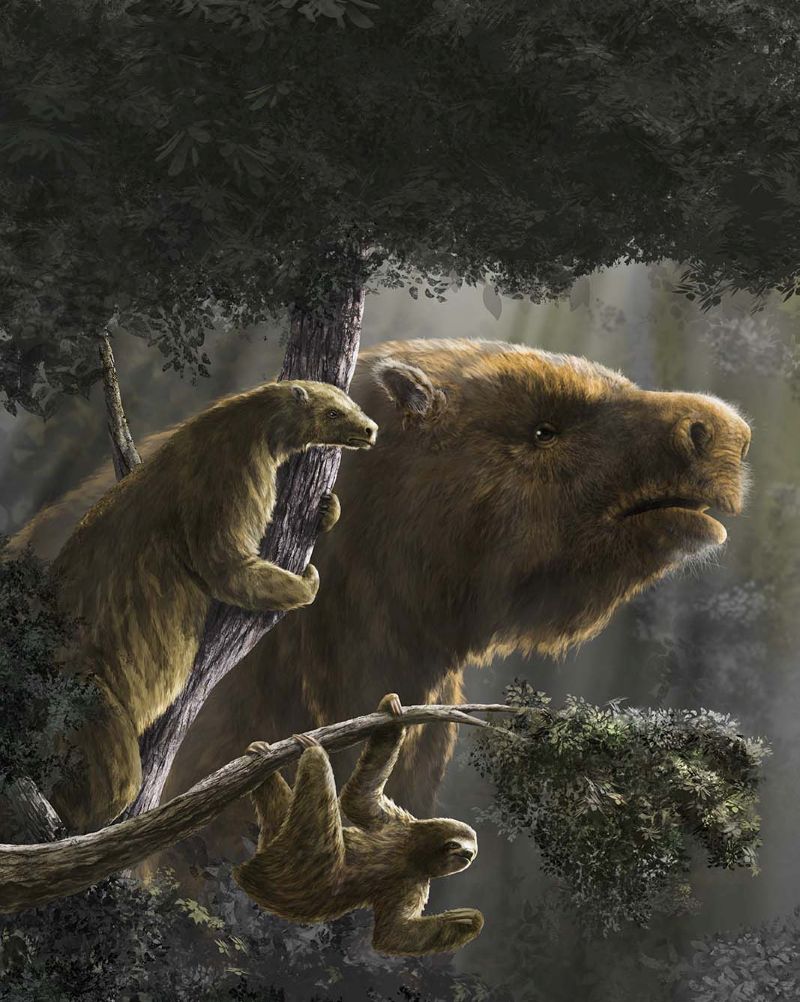
2. Sloths are three times stronger than us!
Sloths are the undisputed pull-up world champions. From the moment they are born, sloths can lift their entire body weight upwards with just one arm. Not only that, but sloths have 30% less muscle mass than similarly sized mammals and are over three times stronger than the average human!
Ver esta publicación en Instagram
They have a highly specialised muscle arrangement that can produce enough strength to withstand the force of a jaguar trying to rip them from the tree. Specialised tendons in the sloth’s hands and feet lock into place, allowing them to hang upside down for long periods of time without wasting any energy. This unique locking mechanism is also how sloths are able to sleep while hanging from a tree branch. They have even been known to remain suspended upside down after death!
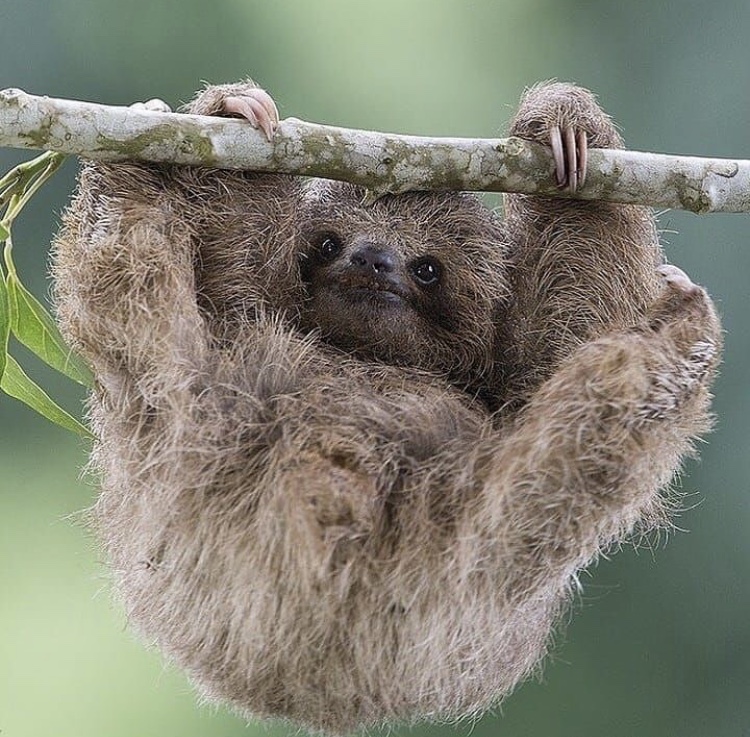
3. They poop once a week, and a third of their body weight in one go
Sloths are famous for their characteristic bathroom habits. They will only relieve themselves once a week and can lose up to a third of their body weight in one sitting! Furthermore, they will only do it on the ground after wiggling around the base of a tree to dig a little hole. This weird weekly routine remains one of the biggest mysteries surrounding sloth behaviour. While there are many different theories, the likely explanation is that it’s all about communication and reproduction.
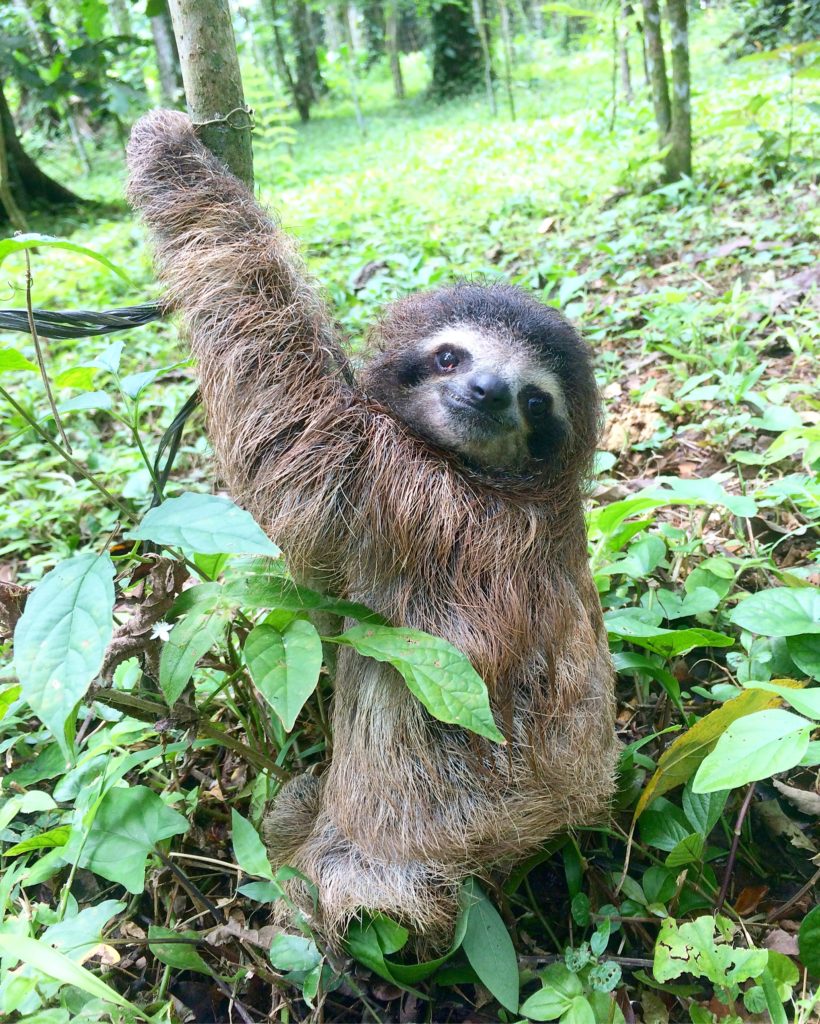
4. Sloths are blind in bright daylight
They have a very rare condition called rod monochromacy, which means that they completely lack cone cells in their eyes. As a result, sloth eyes are colour-blind. They can only see poorly in dim light, and are completely blind in bright daylight. Thankfully, sloths compensate for such poor vision by having a phenomenal sense of smell and a great spatial memory! Their bad eyesight also plays a key role in the sloths slowness; you can’t run around in the trees if you can’t see where you are going!
Ver esta publicación en Instagram
5. They are faster in water than on land
Although they spend most of their time in the trees, sloths are surprisingly good swimmers. Sloths can swim through water three times faster than they can move on the ground! Three-fingered sloths have two more neck vertebrae than any other mammal. This allows them to turn their heads through 270° and effortlessly keep their nose above water when swimming.
Ver esta publicación en Instagram
6. It takes sloths 30 days to digest a leaf
Sloths have the lowest metabolic rate of any mammal, which means that it takes them a long time to digest anything. They have an incredibly large and permanently full four-chambered stomach, which can account for up to 30% of their body mass. In two-fingered sloths, this over-sized stomach is supported by 46 ribs (23 pairs) which is more than any other mammal!
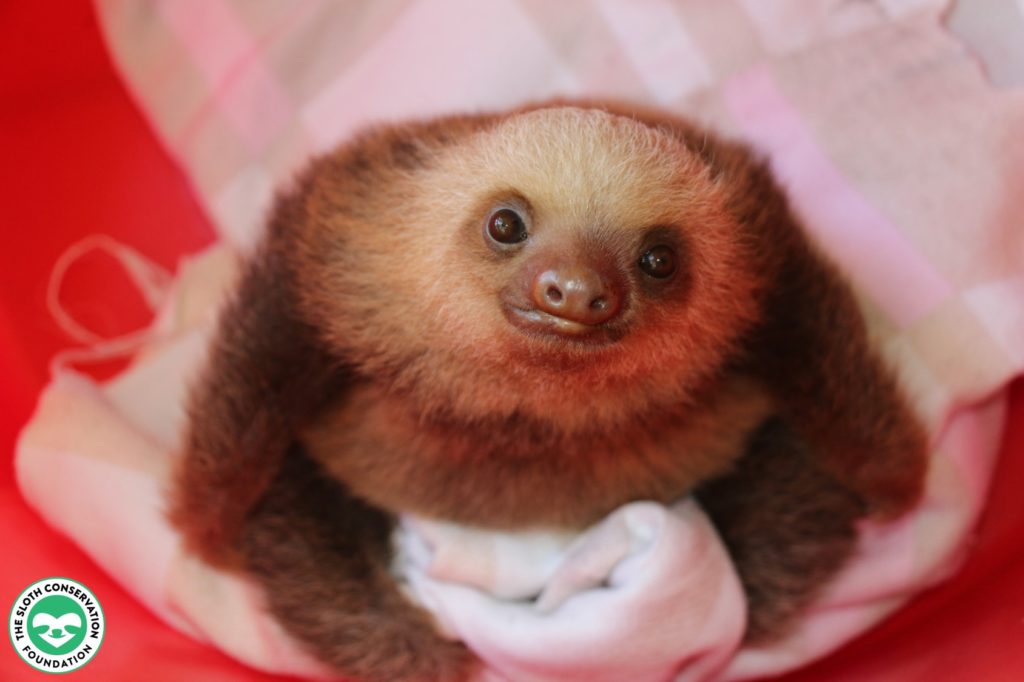
7. They can starve to death on a full stomach
Unlike most mammals, sloths have sacrificed the ability to control their body temperature in order to save energy. Instead they are completely reliant on the environmental conditions, and their core temperature can fluctuate over 10°C during the course of a single day! If they get too cold, the special microbes that live in their stomachs can die, and the sloth can no longer digest the leaves that it eats.
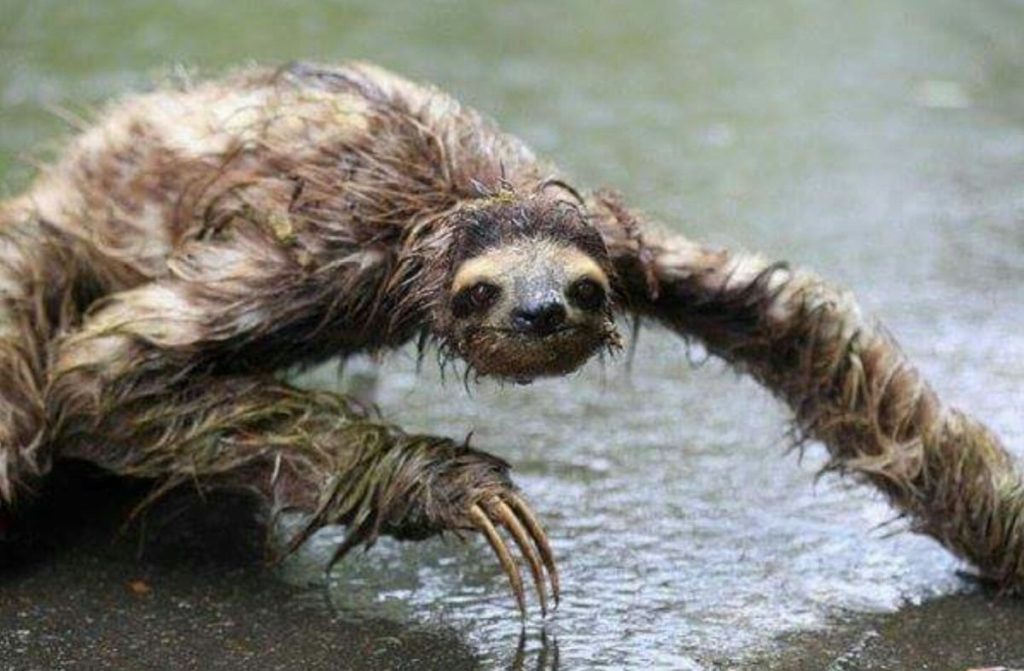
8. Sloths can fall 100 feet without injury
9. They could cure cancer and help with bacterial resistance
Sloths have an unusual method of camouflage. Cracks in their hair allow many different species of algae and fungi to grow which makes them appear green. Some species of fungi living in sloth fur have been found to be active against certain strains of bacteria, cancer and parasites!
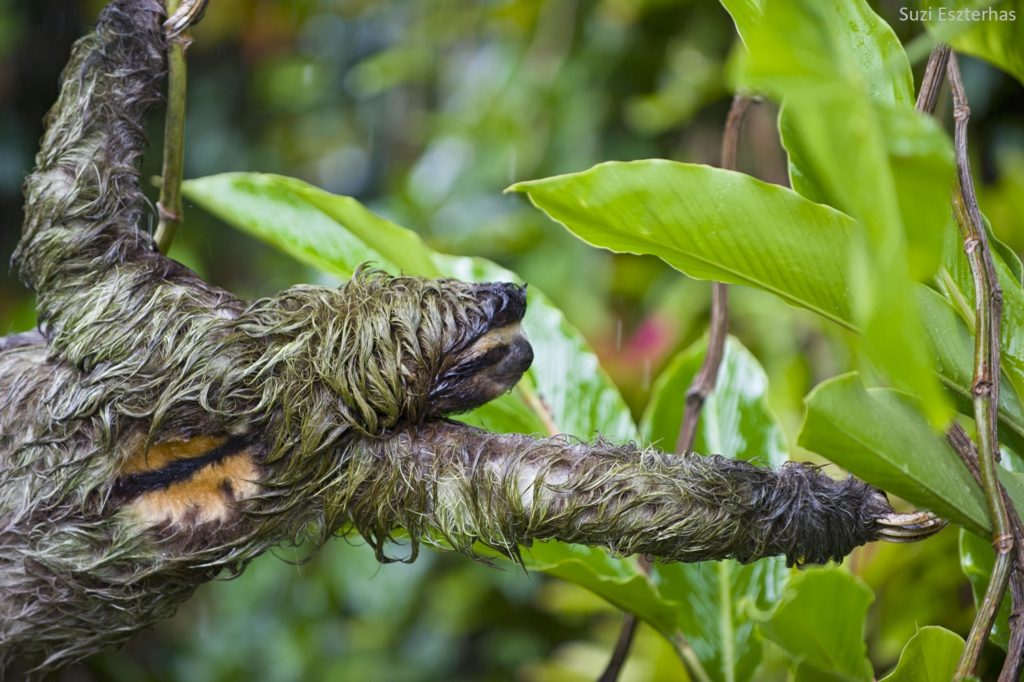
10. Sloth lifespan: No one knows how long they live for
Because sloths are so difficult to study in the wild, no one has ever followed an individual from birth until death. It is virtually impossible to determine the age of an adult sloth accurately, so nobody knows how long sloths live. All we have to go on is the lifespan in captivity, but sloths do not do well outside of their natural environment. The oldest known sloth in the world was a two-fingered sloth named Jan, who was 54 years old and lived at a zoo in Germany. We suspect that wild sloths actually live for much longer than that, and we’re determined to study sloth logevity with an upcoming research project called ‘The Eternal Sloths’!
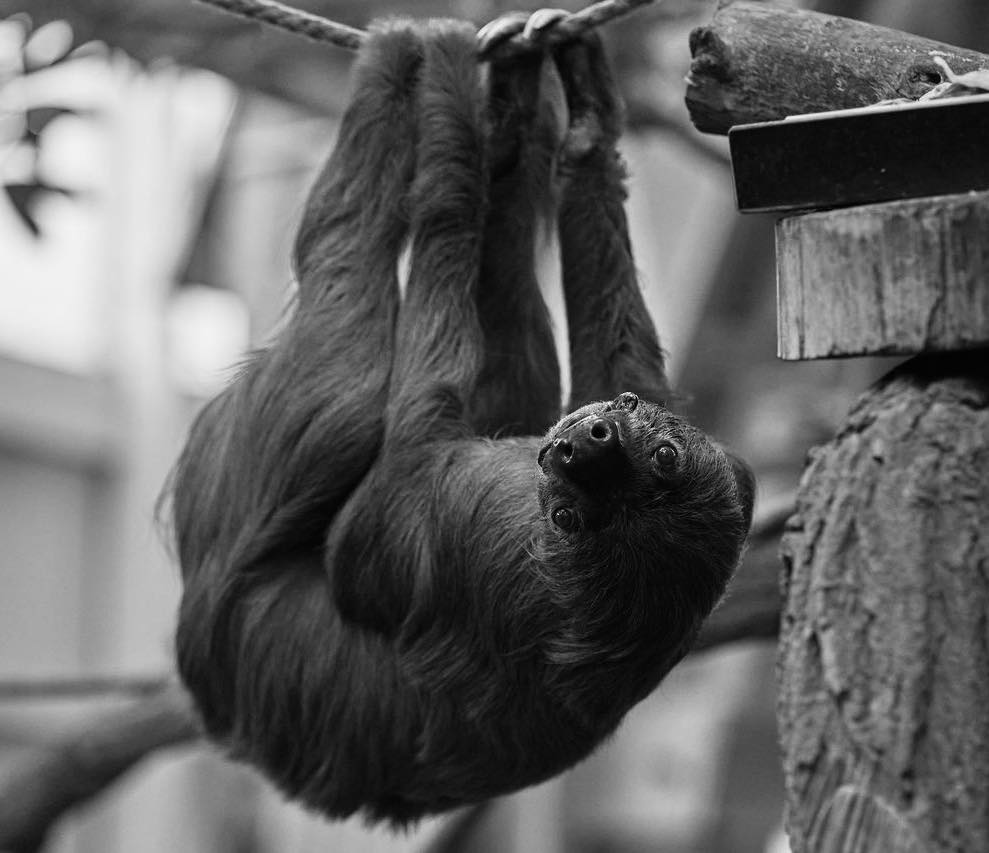
Bonus Facts (and Sloth Trivia)!
You can’t get enough of sloths, so here are the extra cool facts chosen by the SloCo team!
11. Sloths have a colony of hundreds of bugs living in their fur!
Besides the green algae and fungi living in the sloth’s hair, the sloth’s fur also provides a home to an entire ecosystem of invertebrates, some species of which are found nowhere else on earth (like the ‘sloth moths’). A single sloth can host up to 950 moths and beetles within its fur at once. The fun fact? There is a symbiotic relationship between the sloth, the green algae, and the moth. And it is all linked with the bathroom habits of sloths!
Ver esta publicación en Instagram
12. Sloths Can Kill Humans
13. You Can Adopt A Sloth
Symbolically, of course! Our sloth adoption packs are not only the perfect gift for any sloth lover and enthusiast, but also fund our research and conservation initiatives to protect sloths and their natural habitats in Costa Rica. You’ll get a certificate, a biography, photos, and access to GPS updates of your sloths!

Adopt a Sloth
14. Sloth Trivia!
After reading all these sloth facts, do you think you can test your knowledge with our sloth quiz and trivia?


